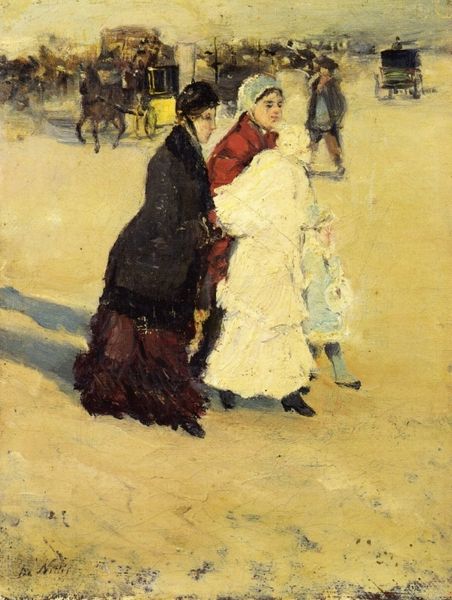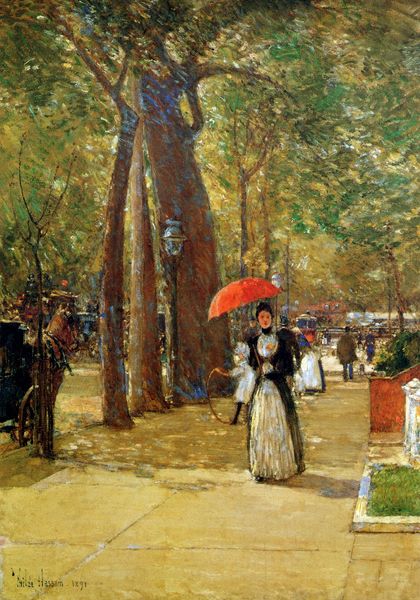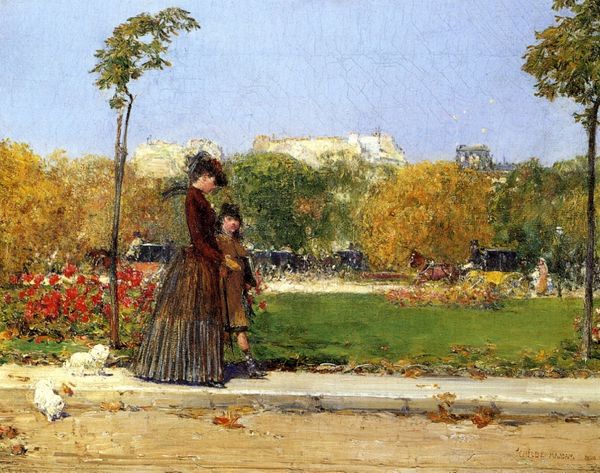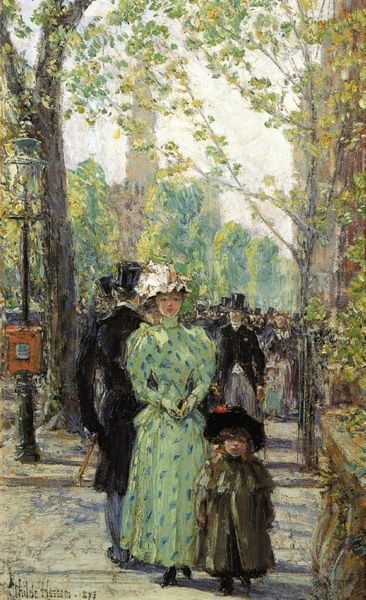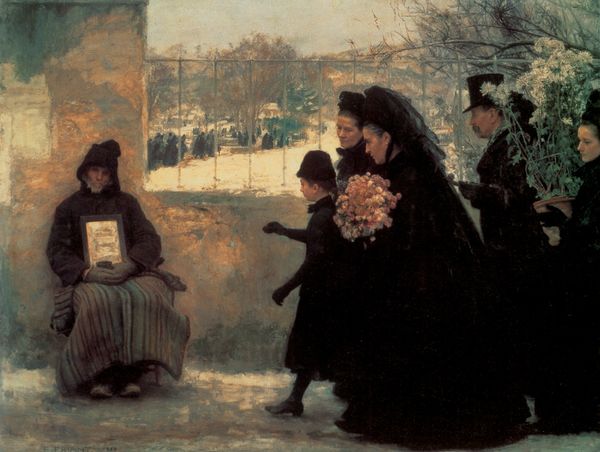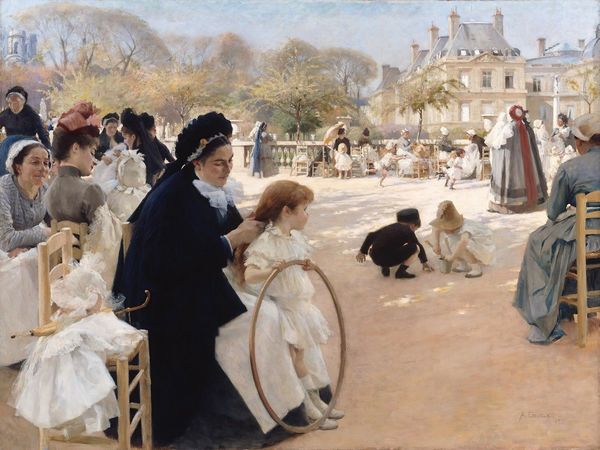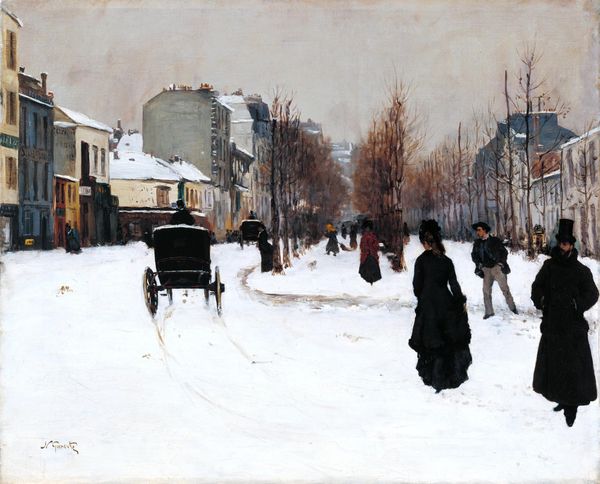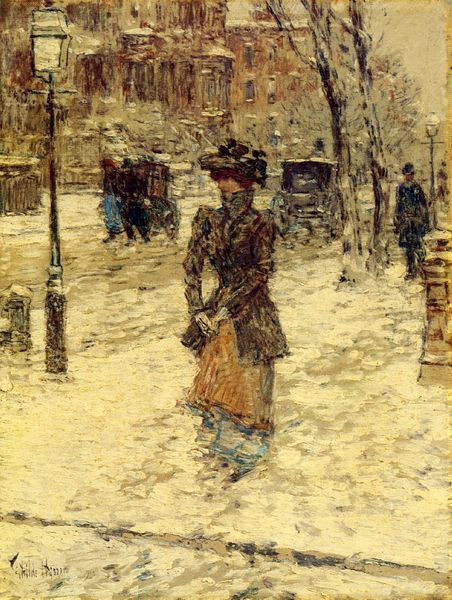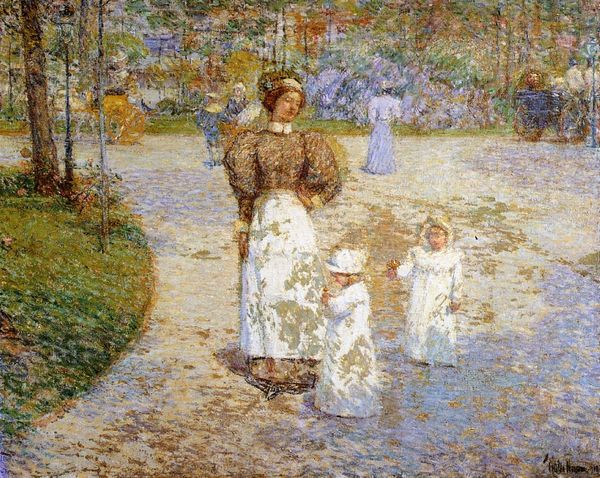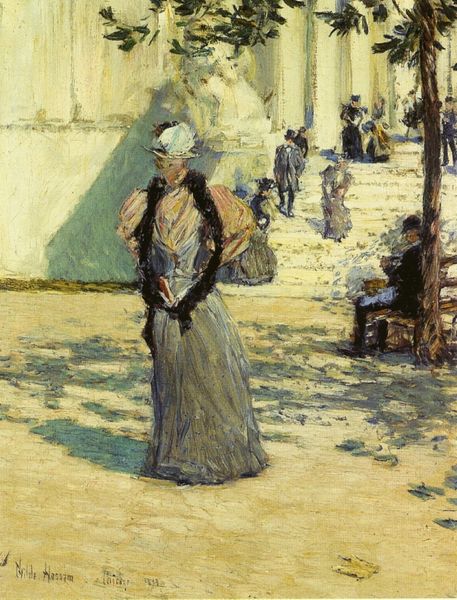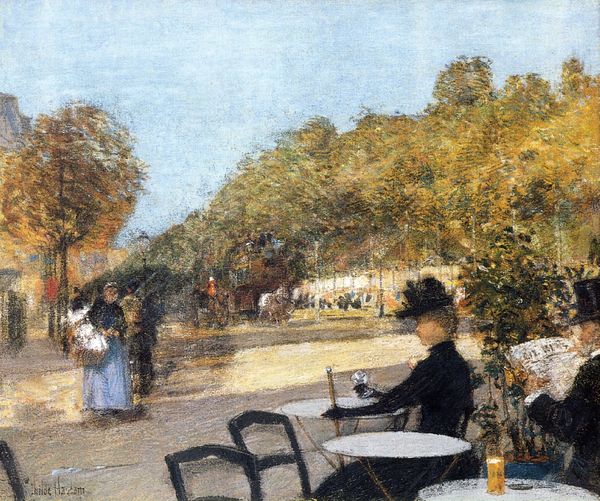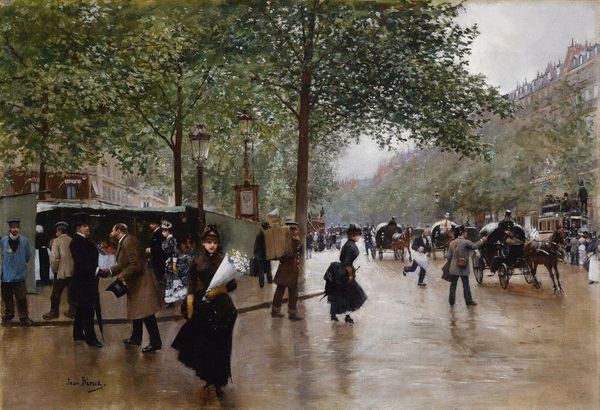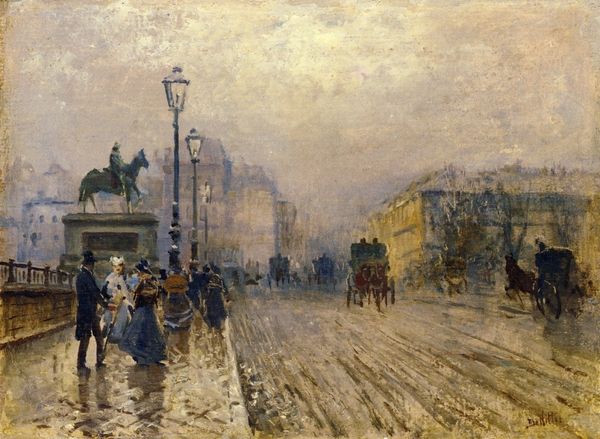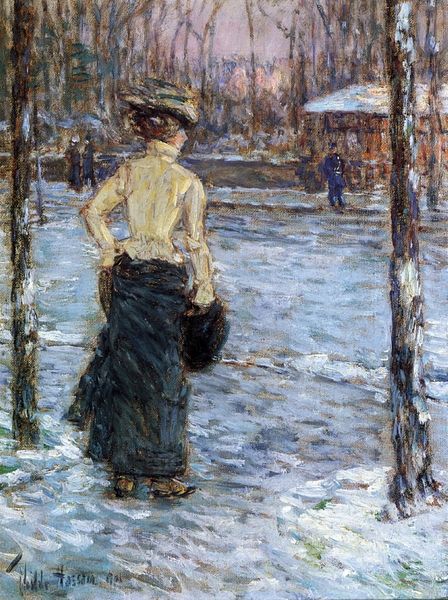
Two Washerwomen Crossing a Small Park in Paris c. 1890
0:00
0:00
plein-air, oil-paint
#
portrait
#
gouache
#
impressionism
#
impressionist painting style
#
plein-air
#
oil-paint
#
oil painting
#
cityscape
#
genre-painting
#
watercolor
Dimensions: 59.2 × 81 cm (23 5/16 × 31 7/8 in.)
Copyright: Public Domain
Editor: This is "Two Washerwomen Crossing a Small Park in Paris," painted around 1890 by Jean-François Raffaëlli, using oil paint, I believe. The two women carrying laundry baskets have a kind of quiet dignity about them. How do you interpret this work? Curator: It's crucial to recognize this isn't just a charming street scene; it’s a statement about class and labor in late 19th-century Paris. Raffaëlli was known for depicting the working class with empathy. The "washerwomen" were part of a large, often invisible, workforce that sustained the city's hygiene and economy. Editor: Invisible? How so? Curator: Think about it: their labor was essential, yet their social status was low. The Impressionists often focused on the leisure of the bourgeoisie, but Raffaëlli draws our attention to these women’s daily toil. The composition itself – the figures slightly blurred, the muted palette – suggests the precarity and marginalization of their existence. Do you see any signs of resistance, maybe some indications of their power in this composition? Editor: I see the confidence in their stride. Maybe their connection? The image is not focused on making them ‘pretty’, so perhaps their worth is in their actions. Curator: Exactly. It subtly pushes back against the idealized depictions of women at the time. The artist directs us away from simply consuming an image, toward actively thinking about the social realities shaping their lives. Editor: That's given me a whole new perspective. It’s more than just Impressionism; it’s social commentary. Curator: Indeed. It reminds us that art can, and perhaps should, provoke questions about the society in which it was created. It asks us to reflect on the hierarchies embedded in our world today.
Comments
No comments
Be the first to comment and join the conversation on the ultimate creative platform.
